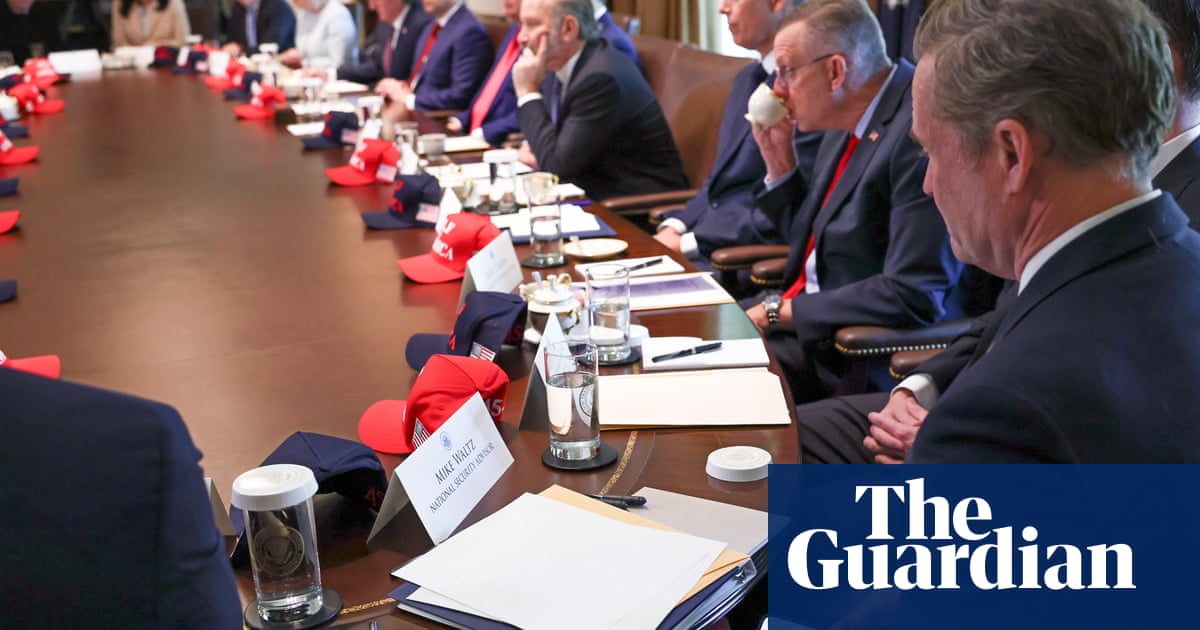Photographs taken atDonald Trump’s cabinet meeting this week have revealed that top White House officials are now communicating using an even less secure version of the Signal messaging app than was at the center of ahuge national security scandallast month.
Theimages, taken by Reuters on Wednesday, show the phone screen of Mike Waltz, thesince-oustednational security adviser who last month accidentally included a journalistin a group chatin which top US officials discussed operational plans to bombYemen, attacks that were then carried out as described.
In the new photographs, Waltz’s screen shows messages between him and contacts who appear to be JD Vance, the vice-president; Marco Rubio, the secretary of state, who has now replaced Waltz as acting national security adviser; Tulsi Gabbard, the director of national intelligence; and Steve Witkoff, the president’s special envoy to the Middle East who has played a key rolein negotiationswith Vladimir Putin over theUkrainewar.
The chat app Waltz was using appears to be a modified version of Signal called TM SGNL, made by a company that copies messaging apps but adds an ability to retain messages and archive them. The White House officials may be using the modified Signal in order to comply with the legal requirement that presidential records be preserved.
The outlet 404 Mediareportedthat the app appears to be “a piece of software from a company called TeleMessage which makes clones of popular messaging apps but adds an archiving capability to each of them”.
That function suggests the end-to-end encryption that makes Signal trusted for sharing private communications is possibly “not maintained, because the messages can be later retrieved after being stored somewhere else”, according to 404 Media.
The photograph does not show much of the content of the messages Waltz was sending, though one to “Rubio” – likely the secretary of state – could be seen to read “there is time” while a message from “Vance” – likely the vice-president – read, “I have confirmation from my counterpart it’s turned off. He is going to be here in … ”
There was also an indication that Waltz had used Signal to call Gabbard, and that the phone’s scheduling function included an 8am meeting for “PDB”, likely the president’s daily brief.
Sign up toThis Week in Trumpland
A deep dive into the policies, controversies and oddities surrounding the Trump administration
after newsletter promotion
On Thursday, before the photograph was widely shared, Trump removed Waltz from his job as national security adviser, naming him UN ambassador and putting Rubio in his place on an interim basis.
Asked about the latest photographs, a White House spokesperson told the Washington Post: “As we have said many times, Signal is an approved app for government use and is loaded on government phones.”
